
While navigating life's rough seas, unexpected accidents, bad luck, deadly illnesses, and disasters can make you feel, "This can't be true!"
My experience five years after leaving Japan was undoubtedly one of those moments.
*
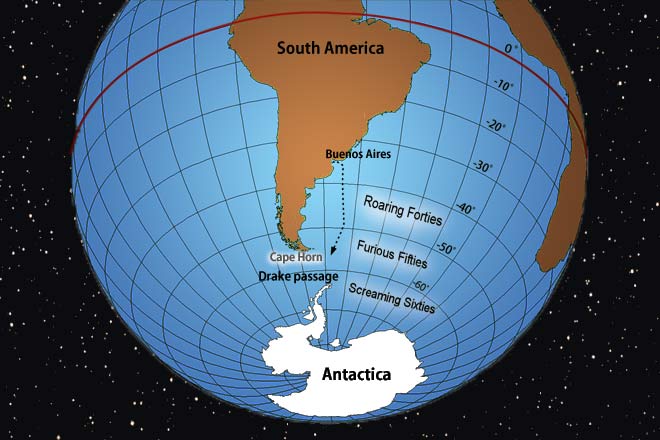
The accident in my early 30s was the biggest shock of my life. I realized then that the belief, "It can't happen to me," was just an illusion.
You must consider not only the height of waves but also the density and destructive power of water, which is more than 800 times that of air.
Since we are often blown by the wind but rarely by water, we are unfamiliar with the power of water.
Ignorance and imprudence can lead to fatal accidents at sea.
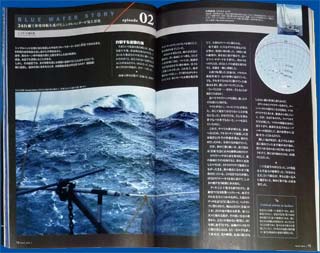
Japanese sailing magazine KAZI
The above episode of Aomi took place in the South Atlantic Ocean. You might think the title "Exploding Waves" is a bit exaggerated, but it is fitting for the following reasons.
Capturing a usable photo is very difficult, even when aiming your camera at the waves. The wave crests collapse in an instant, and the next moment, waves engulf your entire body. The image of waves abruptly breaking into pure white is strikingly similar to the blinding white of a sudden explosion.
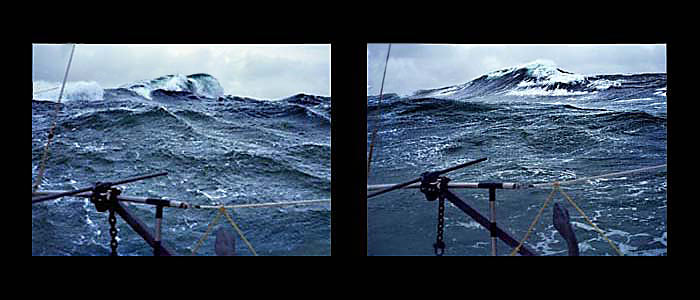 I took these photos in the South Atlantic Ocean. Do they frighten you? The wave on the left might seem more powerful than the one on the right, but you must consider the distance.
I took these photos in the South Atlantic Ocean. Do they frighten you? The wave on the left might seem more powerful than the one on the right, but you must consider the distance.
Upon closer inspection, the wave on the right is beyond the ridge of water. It is more distant but much higher than the wave on the left.
While Aomi was heading north in the South Atlantic Ocean, I captured these photos. At night, Aomi capsized twice, bending the mast and creating a 1.7-meter-long crack in the hull. Additionally, two years later, as described in the story, Aomi overturned again and lost the mast while sailing to Antarctica.
Why did Aomi capsize so many times in the Southern Hemisphere? Why are the southern seas so rough?
*
Cape Horn, regarded as the southernmost point of South America, has been widely feared as the most dangerous spot for sailors since the Age of Discovery. Why is that?
One reason is that Cape Horn is nearly 56° S in latitude. The southernmost point of Africa is about 35° S, and even Tasmania, south of Australia, is around 44° S. You can imagine how high Cape Horn's latitude is.
Generally, the sea becomes rougher as latitude increases. Sailing at higher latitudes is more challenging and painful. It is much better to choose a route at lower latitudes near the equator.
However, latitude isn't the only reason:
London in the U.K. is at 51° N, and Oslo in Norway is at 60° N. Although their latitudes are as high as Cape Horn, why were European sailors so afraid of Cape Horn?
There is a significant difference between the Northern and Southern Hemispheres.
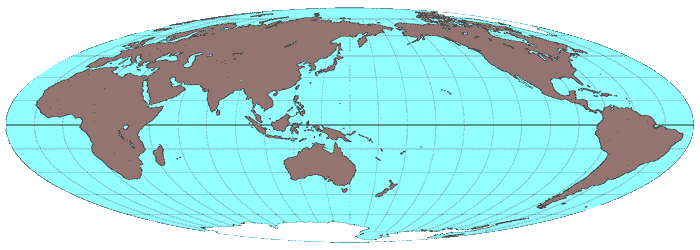
One difference is the ratio of land to sea. While the Northern Hemisphere has 40% of land, the Southern Hemisphere has only 20%.
Land acts as a barrier to wind and prevents waves and swells from growing. However, in the Southern Hemisphere, where there is little land, this moderating effect is much smaller.
Another factor is the cold of Antarctica. What is the relationship between the cold and the roughness of the sea?
As you know, one cause of wind is the temperature difference.

The South Pole is much colder than the North Pole. In fact, the South Pole's summer temperatures are as low as the North Pole's winter temperatures.
Consequently, the temperature difference between the equator and the polar regions is always greater in the Southern Hemisphere compared to the Northern Hemisphere. This greater difference can strengthen the wind in the Southern Hemisphere.
*
Do you know why a sailboat can capsize? Under what conditions does it overturn or capsize?

If there are very high and steep waves like the one above, a boat can capsize easily, but even low waves can cause capsizing.

When the current from a breaking wave hits a boat with a shallow bottom, it may move parallel to the water and sustain no damage.
On the other hand, a boat with a ballast keel, like a sailboat, can capsize easily because the force on the keel can turn it over.

Therefore, running in a side wind is very dangerous for a sailboat, especially when high waves are breaking, because the wave direction and the side of the boat form a right angle.
You might think, "I would never do something so reckless." But sometimes it can't be avoided because a boat may lose control due to weather helm, or a breaking wave might hit and turn the boat's side toward the wave.
You must also pay particular attention when sailing with a following wind using a wind-vane self-steering system because it has a positive-feedback property.
If you get hit by a breaking wave while running with a following wind, it may push the stern aside, turning the boat's side toward the wave. During this unwanted motion, the wind vane steers to boost the unwanted motion instead of correcting the heading because of the apparent wind caused by the movement.
You can avoid this positive-feedback problem by using an electric autopilot with a compass sensor—or, for those who are truly adventurous, by installing your wind vane amidships or even on the bow!
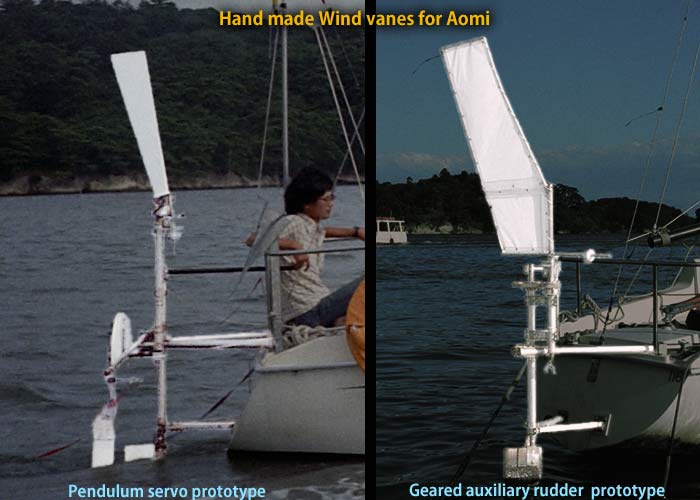
Back to main page.